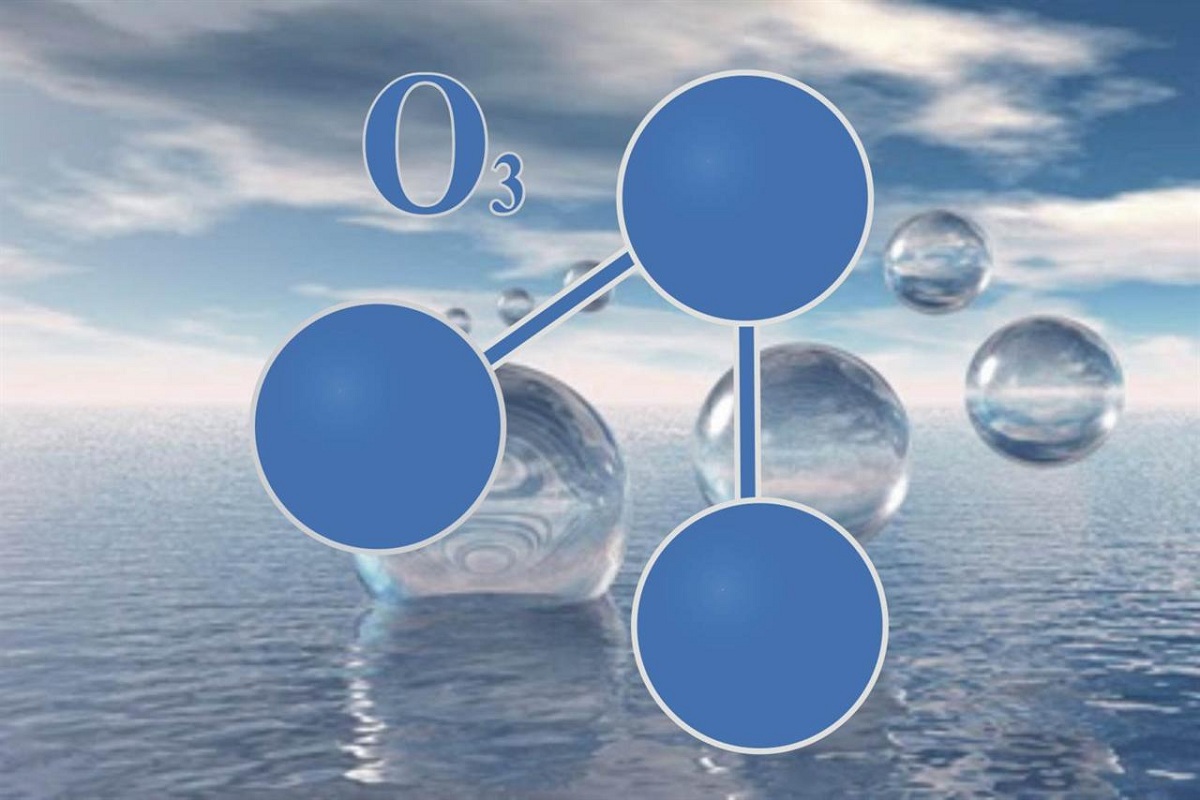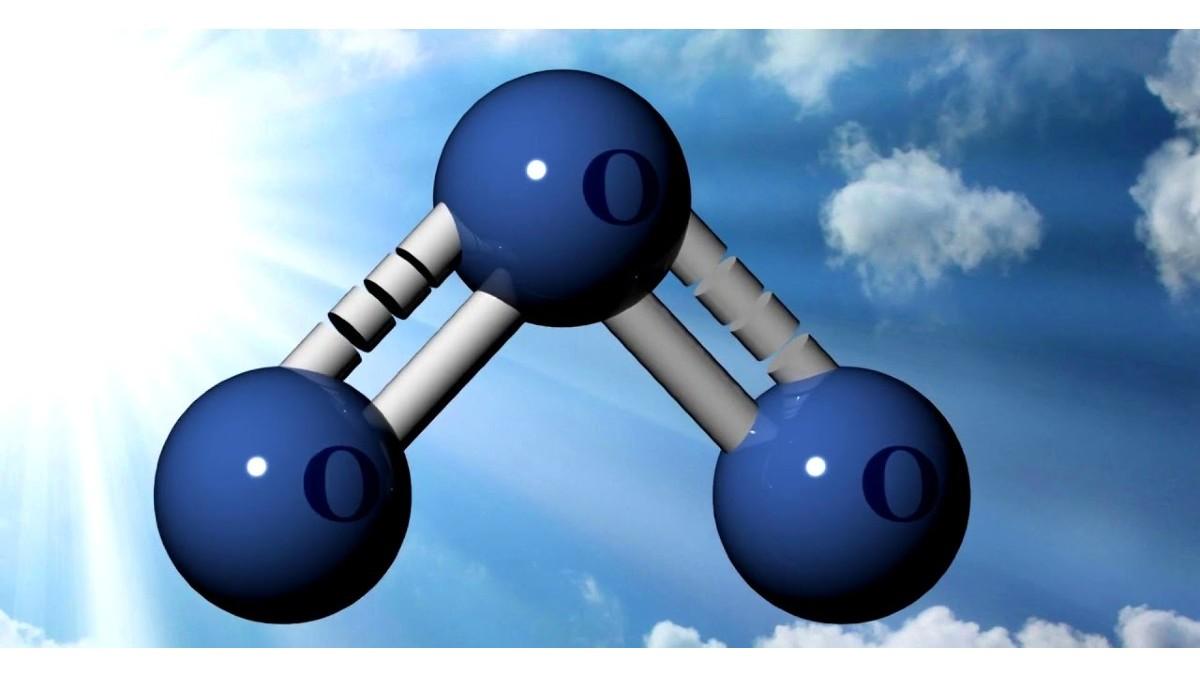
Ozone (O3) is a molecule made up of three oxygen atoms. Ozone is formed when an oxygen molecule gets excited enough to break down into atomic oxygen with two different energy levels, and the collisions between the different atoms are what produces ozone. It is an allotrope of oxygen, resulting from the rearrangement of oxygen atoms when the molecule is subjected to an electrical discharge. Therefore, it is the most active form of oxygen. It is of great importance because it is the main element of the ozone layer. However, many people do not know what is ozone.
For this reason, we are going to dedicate this article to telling you what ozone is, what its characteristics and importance are.
What is ozone

Chemist Christian Friedrich Schönbein managed to isolate this gaseous compound from the Greek word ozein in 1839 and named it "ozone", which means "smell". Later, in 1867, confirmed the ozone formula O3 determined three years earlier by Jacques-Louis Soret.
Ozone is a gaseous compound with a blue tint. In liquid state, at temperatures below -115ºC, it is indigo blue. By its very nature, ozone is highly oxidizing, so it is responsible for the disinfection, purification and elimination of pathogenic microorganisms such as viruses, bacteria, fungi, molds, spores...
Ozone eliminates odors by directly attacking the cause of the odor (odorous substances) and does not add any other odors like air fresheners to try to mask it. Unlike other disinfectants, ozone does not leave chemical residues because it is an unstable gas that quickly decomposes into oxygen under the action of light, heat, electrostatic shock, etc.
Main uses

ozonation is any treatment to which ozone is applied. The main applications of this treatment are the disinfection and deodorization of the environment and the treatment and purification of water. This eliminates pathogenic microorganisms and unpleasant odors.
Ozone can be produced artificially using an ozone generator or ozonator. These devices bring in oxygen from the indoor air and create a voltage discharge (called a "corona effect") across the electrodes. This discharge separates the two atoms that make up the oxygen particle, which in turn unites them three by three to form a new molecule, ozone (O3).
Therefore, ozone is the most active form of oxygen, formed from three oxygen atoms that combats pathogenic and/or harmful organic compounds (main components of environmental pollution).
Beneficial properties of ozone

Once we know what ozone is, we will see what its beneficial properties are.
microbicide
It is probably the most important property of ozone, and many more applications are attributed to it. Microorganisms are any form of life that cannot be seen by the human eye and requires the use of a microscope to view. Microorganisms called pathogens are those capable of causing infectious diseases. They usually remain on all kinds of surfaces, in all kinds of fluids, or float in the air associated with small dust particles, especially in closed places where the air changes very slowly.
Ozone, due to its oxidizing properties, is considered one of the fastest and most effective fungicides known, capable of acting on a large number of microorganisms such as bacteria, viruses, fungi and spores. All of them are responsible for human health problems and unpleasant odours.
Ozone inactivates these microorganisms by reacting with intracellular enzymes, nuclear material and components of its cell envelope, spores and viral capsids. In this way, the microorganisms cannot mutate and confer resistance to this treatment because the destruction of the genetic material occurs. Ozone works by oxidizing particles in the cell membrane, making sure they don't reappear.
Ozone treatment is odourless, so it is not only responsible for sanitizing and neutralizing any type of odour, but also does not imply specific odors at the end of use. It is important to point out that ozone does not produce any residue either, since being an unstable particle, tends to return to its original form, oxygen (O2), therefore, respects the environment and the products, and guarantees the well-being of people.
Deodorant
Another characteristic of ozone is its ability to eradicate any type of unpleasant odor without leaving any type of residue. This treatment is very useful in closed spaces where the air cannot be constantly renewed. In these types of spaces, if there is an influx of people, unpleasant odors may arise (tobacco, food, humidity, sweat, etc.) due to the action of molecules in suspension and different microorganisms on them.
Ozone attacks for two reasons, on the one hand it oxidizes organic matter, in addition to attacking it by ozonation, and on the other it attacks the microorganisms that feed on it. There are several odors that can be destroyed by ozone. It all depends on the nature of the substance causing the odor. From this property, its vulnerability to the action of ozone can be determined, as well as the dose necessary to eliminate the ozone.
The result of a correct ozonation is that where there is a bad smell, it does not smell like anything. As with any disinfectant, the disinfecting power of ozone depends on its concentration and the contact time between the disinfectant and the pathogen. Ozone responds very quickly to pathogens because it is an oxidant for pathogens.
ozone damage
Ozone not only has beneficial properties, but also some that are dangerous to human health. These are the main damages of ozone. The effects on health will depend on the degree of exposure to ozone (time and quantity):
- Premature aging of the lungs.
- Impaired lung function.
- Irritation of the eyes, nose and throat.
- asthma attacks
- Headaches.
- Alteration of the immune system.
That's why in summer especially in those places with high rates of environmental pollution, sunny and very hot (no wind), you should pay attention to the concentration of ozone in the air and start taking precautions when they appear. More than 180 µg/m3 in high-risk groups and more than 240 µg/m3 in the rest of the population.
For this, it must be taken into account that the concentration of ozone inside the house is usually 50% of that outside. In addition, it is blown by the wind, and the highest level during the day is usually reached in the afternoon and falls at sunset.
I hope that with this information you can learn more about what ozone is and its characteristics.